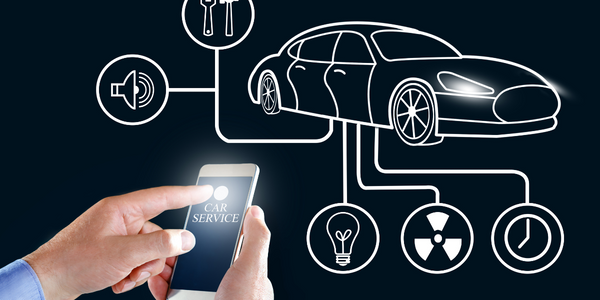公司规模
Large Corporate
地区
- Asia
国家
- Japan
产品
- Cognito Detect
- Cognito Detect for Office 365
技术栈
- AI-based network detection and response (NDR)
- Machine Learning
实施规模
- Enterprise-wide Deployment
影响指标
- Cost Savings
- Digital Expertise
- Productivity Improvements
技术
- 分析与建模 - 机器学习
适用功能
- 商业运营
用例
- 网络安全
- 入侵检测系统
服务
- 网络安全服务
关于客户
日商电子株式会社是一家总部位于日本的公司,致力于为日本的企业组织提供尖端的美国技术。该公司与 Vectra 等早期初创公司合作并对其进行投资,这些公司开发创新的新技术和颠覆性的商业模式。日商电子株式会社提供一系列产品和服务,包括安全产品和服务。该公司致力于为客户提供最新、最有效的技术解决方案,帮助他们在快速发展的数字领域保持领先地位。日商电子株式会社是新技术的早期采用者,始终在寻找能够增强其产品并为客户提供更大价值的创新解决方案。
挑战
日商电子公司是一家为日本企业提供美国尖端技术的公司,由于先进网络攻击的增多,该公司对自己的网络和云安全状况的担忧日益增加。这些隐藏的威胁很容易躲过防火墙、IDS 和其他传统安全系统,并在网络内部传播以寻找可窃取的资产。日商曾使用其 SIEM 分析防火墙日志,这是一项手动且耗时的操作。该公司还担心最近基于 SaaS 的 Microsoft Office 365 中凭证滥用和帐户接管的激增,每月有超过 30% 的组织受到影响。攻击者利用社会工程学来利用人类行为、提升帐户权限并窃取关键业务数据。该公司明白,它需要网络和公共云内部的可视性,以识别和阻止在流量中横向移动以进行监视、传播和窃取的隐藏网络攻击者。
解决方案
为了应对这些响应和云安全挑战,Nissho 率先采用了 Vectra® 的 Cognito Detect™。Cognito Detect 利用人工智能即时识别和阻止云和数据中心工作负载、Microsoft Office 365 等 SaaS 产品以及用户和物联网设备中的网络攻击者。通过自动执行威胁检测、优先级排序和其他手动一级和二级安全任务,Cognito Detect 显著减少了 Nissho 的安全运营工作量。其合规性报告功能可确保高层管理人员始终了解与网络安全相关的业务风险。为了加快人工智能辅助的威胁搜寻和事件调查,Cognito Detect 从所有网络流量中收集相关日志和元数据。然后,收集的元数据会丰富有关每次攻击的深度安全洞察和详细背景信息,包括所有受感染的用户、帐户、设备,以及攻击是否是更大规模活动的一部分。为了阻止帐户接管,Nissho 计划部署 Vectra 的 Office 365 版 Cognito Detect,它可以从多个 Office 365 SaaS 服务(如 Microsoft Azure Active Directory、Teams、Outlook、SharePoint、OneDrive 和 Exchange)中提取活动日志。
运营影响

Case Study missing?
Start adding your own!
Register with your work email and create a new case study profile for your business.
相关案例.

Case Study
Protecting a Stadium from Hazardous Materials Using IoT2cell's Mobility Platform
There was a need for higher security at the AT&T Stadium during the NFL draft. There was a need to ensure that nuclear radiation material was not smuggled inside the stadium. Hazmat materials could often be missed in a standard checkpoint when gaining entry into a stadium.

Case Study
Enel Secures Italian Power Generation Network
Electric energy operators around the world are working to increase the reliability and cyber resiliency of their systems. This includes Enel, a global power company that manages and monitors the Italian power grid. This grid:• Serves 31 million customers• Has a net installed energy capacity exceeding 31 gigawatts• Includes more than 500 power generation plants,including hydroelectric, thermoelectric, and wind• Is managed and monitored by Enel 24/7/365• Is operated by Terna, the Italian Transmission System Operator (TSO)Enel is responsible for the availability of the grid’s underlying ICS and industrial network. It also manages Regional Control Centers and Interconnection Centers which connect with the TSO. The TSO manages the flow of energy to the grid plus controls and remotely regulates the power generation of power plants, increasing and decreasing power production as required. The complex system of interaction and cooperation between Enel and the TSO has strong security implications as well as operational and business challenges.

Case Study
Securing the Connected Car Ecosystem
In-vehicle communications and entertainment system hosts high-value or sensitive applications. API libraries facilitate communication and sharing of vehicle data. These API libraries are vulnerable to reverse engineering and tampering attacks and may even result in loss of passenger safety. Attackers can inject malware that may be able to migrate to other in-car networks such as the controller-area-network (CAN) bus which links to the vehicle’s critical systems. Software provided for dealers to interface with cars through the OBD2 port is vulnerable to reverse engineering and tampering attacks. Hackers may be able to abuse these tools to inject malicious code into the ECUs and CAN bus. Attackers can lift the cryptographic keys used, and use that to build their own rogue apps/software. Their cloned version of the original app/software may have altered functionality, and may intend to gain access to other in-car networks.

Case Study
Secure and Cloud-based Data Marketplace
The great promise of new connected concepts of industry like 'Industry 4.0' is their ability to deliver a historically unparalleled level of responsiveness and flexibility. While modern supply chains are already heavily integrated and designed to be fluid and fast moving, a large swathe of manufacturing still remains beholden to economies of scale, large production runs, and careful preplanning.The Industrial Internet of Things (IIoT) is set to change this by allowing small-batch or even custom manufacturing on a truly industrial scale. With machines whose functions are not set in stone, but flexible and determined by their operating software and with a new form of connectivity bringing industrial engineers, product manufacturers, and end users closer together than ever before. Ad-hoc adjustments to automotive parts, for example, during active product runs or the bespoke manufacturing of custom sneakers become very viable options indeed.Much of this remains a theoretical vision, but IUNO, the German national reference project for IT security in Industry 4.0 demonstrates the new capabilities in action with a secure technology data marketplace running a smart drinks mixer.

Case Study
Expedia Hosted by 2lemetry Through AWS
Expedia is committed to continuous innovation, technology, and platform improvements to create a great experience for its customers. The Expedia Worldwide Engineering (EWE) organization supports all websites under the Expedia brand. Expedia began using Amazon Web Services (AWS) in 2010 to launch Expedia Suggest Service (ESS), a typeahead suggestion service that helps customers enter travel, search, and location information correctly. According to the company’s metrics, an error page is the main reason for site abandonment. Expedia wanted global users to find what they were looking for quickly and without errors. At the time, Expedia operated all its services from data centers in Chandler, AZ. The engineering team realized that they had to run ESS in locations physically close to customers to enable a quick and responsive service with minimal network latency.
.png)
Case Study
OTA Software Updates for Smart Energy (gridX)
gridX has a requirement for over-the-air software updates for their gridBox devices and used the Yocto Project for their builds. The driver for the requirement was having the ability to quickly support new features, as well as deploying bug fixed and path known security vulnerabilities. New software updates with a US stick manually to all gridBox devices in the field would be prohibitively expensive and labor-intensive.







